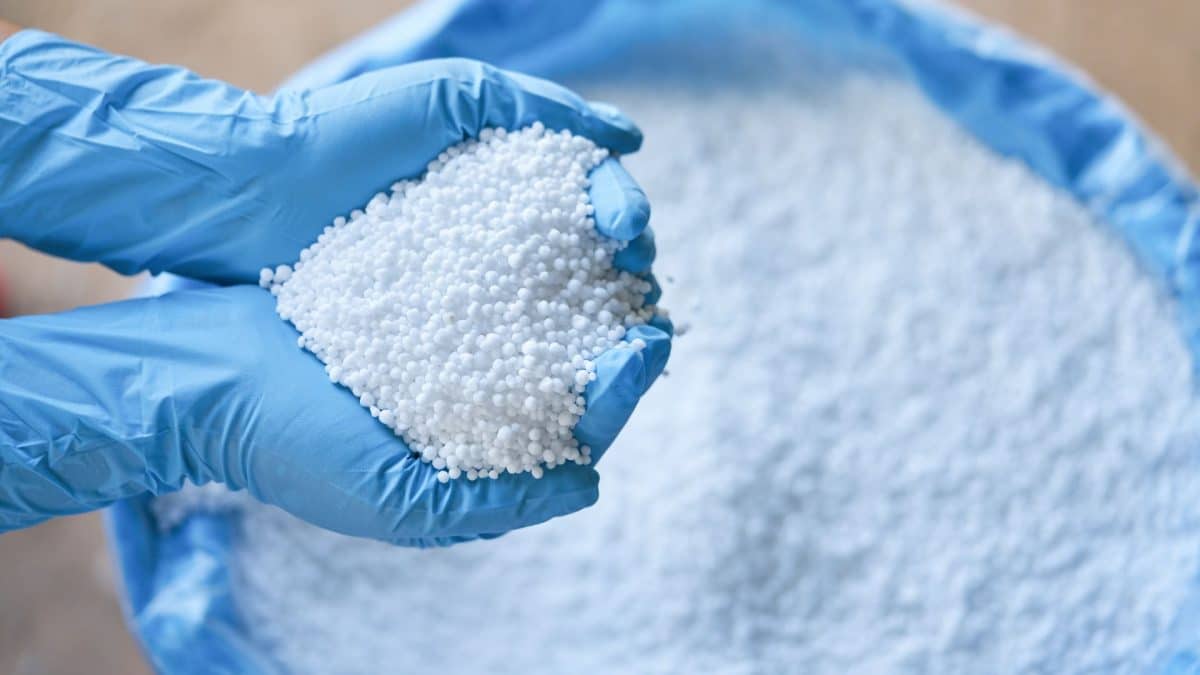Why can’t I access this file?
Possible reasons you cannot access this file:
- Your membership has expired.
- The file is restricted to certain users.
If you are seeing this message in error, please contact us.

The Verified Ammonia Carbon Intensity (VACI) program, a voluntary certification of the carbon footprint of ammonia production at a specific facility, was recently launched by The Fertilizer Institute (TFI). VACI is designed to provide ammonia consumers seeking to reduce emissions across their supply chains with an independent and certifiable carbon intensity score.
Ammonia is essential for fertilizers because it provides crops with nitrogen, which helps them grow. Certain production methods for ammonia may generate carbon dioxide (CO₂) due to the use of natural gas, some of which may be released into the atmosphere.
Currently, no official certification or classification accurately reflects the CO₂ emissions of these different ammonia production methods—only a confusing color-coding system that identifies the production process.
Some may have heard of terms like “grey ammonia” or “green ammonia” in the news. This classification system emerged in the 2010s as a way to quickly identify the ammonia production method. However, it is not scientifically based. There are seven color codes for ammonia production methods, and while they might tell you how it was made, they don’t consider the CO₂ impact.
For example, some plants may use electrolysis to produce ammonia. While the ammonia production plant may have very few emissions, the accurate measure of CO₂ released should also look at the energy source. If it’s a coal-burning plant with no CCS, the CO₂ emissions could be high. However, if the energy source is mixed, for example, coal and solar, there would be lower emissions. This means two producers could use the same production method but with vastly different CO₂ emission levels. As a result, the production method alone does not offer insight into the environmental impact or efforts to reduce CO₂ emissions.
That’s where VACI comes in. It certifies ammonia facilities that are actively reducing their emissions while producing ammonia. Unlike traditional labels that classify ammonia by production method, the VACI program quantifies carbon intensity. This shift moves the focus from production methods to measurable emissions, enabling meaningful improvements in carbon reduction.
Investing in Low-Carbon Solutions
The VACI program encourages innovation in low-carbon technologies. Producers are motivated to adopt greener methods, such as incorporating renewable energy and improving CCS efficiency. These steps help reduce the carbon intensity of ammonia for fertilizer and energy use, contributing to global sustainability goals.
Benefits of the VACI Program:
A Path Toward Long-Term Sustainability
VACI certification is more than just a seal of approval. It’s a meaningful, measurable way to create transparency between producers and the public. By participating in this certification, ammonia producers are recognized for their efforts to reduce carbon footprints and align with global climate targets. These initiatives are essential for building a sustainable agricultural future and, ultimately, a cleaner, healthier planet for all.
For more information, visit our website at verifiedammonia.org.

Elections are a fun week for those of us working in DC in the policy arena. First, it is the equivalent of our Superbowl, and we wake up on Wednesday morning (sometimes) with winners and losers. I am a very competitive person, and I enjoy the element of competition in our democratic process. Watching vote totals, electoral college counts, and percent of counties reporting is like checking college football scores on Saturday. Second, our role of advocating for the industry in Washington DC means that we get a lot of calls and texts from members and friends asking for insights. The truth is, we likely don’t know any more than our members and friends in the heartland, but we probably obsess over it more.
With that said, I am by no means a political expert or have the inside track that my friends, neighbors, or colleagues that actually work in politics; but proximity does allow us to come into contact with those who are. We heard from a political pundit or pollster weekly at association meetings leading up to the election. You can argue that hindsight is 20/20 vision, but by far the most impactful pundit I heard was at an Association CEO luncheon two days after the election. Former Cook Political Report and CNN political analyst Chris Cillizza provided an incredibly thoughtful post-election analysis, and I wanted to share some of the nuggets that he presented to the group.
Cillizza’s analysis was not just insightful, but relatable and understandable to those of us who don’t live and breathe politics but are interested in better understanding a complex topic. Below are Chris’s insights into how former President (and now current President-Elect) Donald Trump pulled off such a decisive victory over Vice President Kalama Harris. His full detailed analysis is also available on his website, available here.
Key Stats for a Trump Victory
So how did we get there? Cillizza made it very clear that he believed Trump won the election, and Harris did not lose it. But nonetheless, Cillizza’s analysis highlighted three main factors that contributed to Harris’ loss:
1. The Economy as a Decisive Issue: Exit polls showed that two-thirds of voters identified the economy as their top concern. Within this group, Trump held a significant lead, with a 69-29 margin. Voters’ focus on economic issues proved pivotal, and many voters aligned with Trump’s policies in hopes of economic improvement.
2. Biden’s Unpopularity and Harris’s Response: Biden’s low approval ratings posed challenges for the Harris campaign. Her reluctance to differentiate herself from Biden or define her own stance became apparent during an interview on The View. When asked what she would do differently from Biden, Harris replied, “There is not a thing that comes to mind.” This response missed an opportunity to appeal to voters dissatisfied with the current administration and reinforced her association with Biden’s unpopularity.
3. The Impact of Messaging on Key Voting Groups: The Democrats centered their campaign on the importance of defending democracy, portraying Trump as a threat. However, this message resonated primarily with the left-leaning base and less so with undecided or moderate voters. This difference was especially evident in Senate races, where four states that voted for Trump also elected Democratic senators. For context, there were a combined 69 senate races in the 2016 and 2020 elections and in only one instance (Republican Senator Susan Collins of Maine) did a state elect a senator and president from different parties.
Cillizza also noted that the Harris campaign heavily emphasized abortion rights, hoping this would drive voter turnout. While abortion-access ballot measures passed in seven out of ten states, Trump still won in many of these areas showing that even when voters supported abortion access, they did not necessarily align with Harris’s broader platform.
Conclusion
In the end, the 2024 presidential election underscored the importance of addressing issues that matter most to Americans. It also reminded me that TFI’s role as the voice of the fertilizer industry is not just to react to election results but to stay focused on representing the interests of our industry by working with policymakers, regardless of party, to craft sound policies that foster stability, innovation, and growth.
I hope you enjoyed diving into these insights as much as I did. There will certainly be no shortage of Monday morning quarterbacks and dissection of the 2024 election results! But for now, I’m happy to take a breather and get back to focusing on policy.

Possible reasons you cannot access this file:
If you are seeing this message in error, please contact us.

We’re diving into a topic that might not always grab the headlines but is crucial for a steady food supply: the Water Resources Development Act (WRDA). This legislation, along with our inland waterways, plays a key role in supporting the fertilizer industry and agriculture.
What is WRDA?
The Water Resources Development Act (WRDA) is pivotal U.S. legislation that authorizes and prioritizes water resource projects, including dams, levees, ports, and inland waterways. WRDA ensures that the US Army Corps of Engineers has the appropriate direction for maintaining and improving our waterway infrastructure, preventing disruptions, and supporting the agricultural industry by facilitating efficient transportation of goods like fertilizers.
Why Inland Waterways Matter
Inland waterways are the hidden highways of our transportation network, essential for moving goods smoothly across the country. For the fertilizer industry, these waterways are vital. Fertilizers are bulky and heavy, making water transport efficient and cost-effective. Regular Congressional action on WRDA bills keeps this infrastructure in top shape, ensuring fertilizers and other essentials reach farmers efficiently.
Investing in water infrastructure through WRDA isn’t just about maintaining old systems—it’s about making them more efficient and reliable. This often includes the construction of whole new lock facilities to meet modern requirements. This means smoother transport, lower costs for producers and consumers, and a stronger, more resilient economy.
The Case for Investing in Waterway Infrastructure
Many locks and dams in the U.S. are over 90 years old, some dating back to the 1930s. This aging infrastructure urgently needs maintenance and upgrades to prevent significant delays and disruptions. Portions of the inland waterway network in poor condition act as bottlenecks due to the need for unscheduled maintenance, with each day of delay depriving crops of essential nutrients, resulting in lower yields and higher costs, which can lead to higher prices for consumers. Many of our oldest locks are only half the size needed for modern tug and barge traffic.
Investing in waterway infrastructure is crucial for efficiency, safety, and economic stability. Upgrading our lock and dam systems ensures smoother, more reliable transportation, reduces costs, and enhances economic stability. WRDA plays a critical role by prioritizing essential maintenance and upgrades, transforming old systems into efficient networks.
Key WRDA Legislative Support and Benefits
TFI supports the enactment of a final WRDA bill before the end of 2024. Thankfully, both the Senate and House have passed their versions of the legislation. TFI is especially supportive of a provision advanced by the Senate which would propose changing the cost-share for waterway projects from the current 65% general revenues/35% Inland Waterways Trust Fund (IWTF) split to 75% general revenues/25% IWTF. Bringing more general revenue dollars towards inland waterway projects accelerates funding for critical construction and rehab projects, saving taxpayers money and speeding up project completion.
Addressing the maintenance backlog, estimated at billions of dollars, is an investment in our future. Well-maintained waterways enable the fertilizer industry to transport goods quickly and reliably, ensuring farmers receive supplies on time. This leads to better crop yields and stable food prices.
Positive Consequences of WRDA Reauthorization
Recent progress in advancing the WRDA bills has been remarkable, with strong bipartisan support in both the Senate and the House. The Senate’s bill even received unanimous approval, showcasing a unified commitment to enhancing our water infrastructure. This legislative progress promises a brighter future for our waterways and the agricultural sector.
With the right policies in place, WRDA reauthorization ensures:
Let’s Wrap It Up
WRDA and our inland waterways are critical components of the fertilizer industry’s supply chain. Investing in this infrastructure ensures that farmers get the supplies they need, crops grow efficiently, and food prices remain stable. So, next time you enjoy a fresh salad or a hearty bowl of pasta, take a moment to appreciate the complex system that helps get that food from the farm to your table. It’s all connected, and it all starts with smart investments in our waterway infrastructure. By supporting these efforts, we can keep our food system strong, our economy stable, and our communities thriving.

Formaldehyde may not immediately spring to mind when considering agriculture, yet it plays a critical role, particularly in the production of fertilizers. Often linked with the preservation of biological specimens, formaldehyde’s agricultural importance cannot be overstated. As a naturally occurring organic compound, formaldehyde is vital for producing granular urea and slow-release urea fertilizers. However, the EPA’s newly proposed, overly conservative risk determinations on formaldehyde could drastically alter its use in agriculture, potentially leading to higher food costs and impacting crop yields.
Understanding Formaldehyde’s Agricultural Impact
Formaldehyde is crucial in producing urea and slow-release urea fertilizers. Nearly 25% of all nitrogen consumed domestically is urea. Slow-release urea fertilizers come in both solid and liquid forms and are designed to release nutrients slowly. This slow-release process reduces nitrogen runoff—limiting environmental impacts—and ensures that crops receive a steady supply of nutrients. As a result, plants are healthier and have higher yields. This method makes formaldehyde indispensable in modern agriculture, as it enhances the efficiency of plants using nitrogen and supports sustainable farming efforts.
Why Farmers Rely on Urea-Formaldehyde
The Challenge of New EPA Formaldehyde Regulations
The Environmental Protection Agency (EPA) has released its draft risk determinations for formaldehyde and a draft occupational exposure value. Industry experts have criticized these proposed limits, arguing that the restrictions are too severe, don’t align with global standards, and are not justified by the best available science. In fact, the EPA’s proposed limits are even lower than the levels of formaldehyde found in half of homes in the US. Finalization of unobtainable exposure values could disrupt the production of essential agricultural products without improving safety. This situation highlights the need for realistic regulations that balance wellness with the practical needs of agriculture.
If finalized as proposed, the EPA’s unreasonable risk determination of formaldehyde use will create a tricky situation. The subsequent risk management rule will aim to eliminate unreasonable risks by imposing unachievable workplace protections or prohibited uses that completely bring challenges for agriculture, farmers, and consumers.
Challenges from stricter regulations could impact the lives of all Americans. Potential issues include:
Formaldehyde may not be a familiar substance outside scientific and agricultural circles, but it’s essential for producing fertilizers that sustain our food supply. Although the industry is committed to working with agencies to promote the safety of the agriculture value chain, EPA’s proposed exposure limit is excessively strict and not based on the best available science. The challenge lies in balancing public health concerns with agricultural production needs. A more balanced approach to regulation would safeguard public health without disrupting the economic stability of farmers or impacting crop yields and food prices. By aligning these new regulations with practical agricultural practices and international standards, we can protect public health and support the foundation of America’s food system.